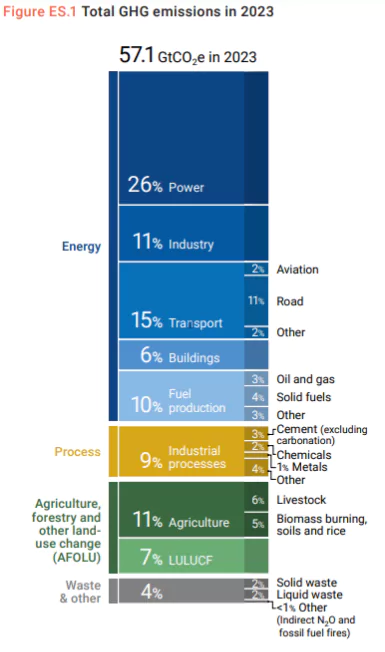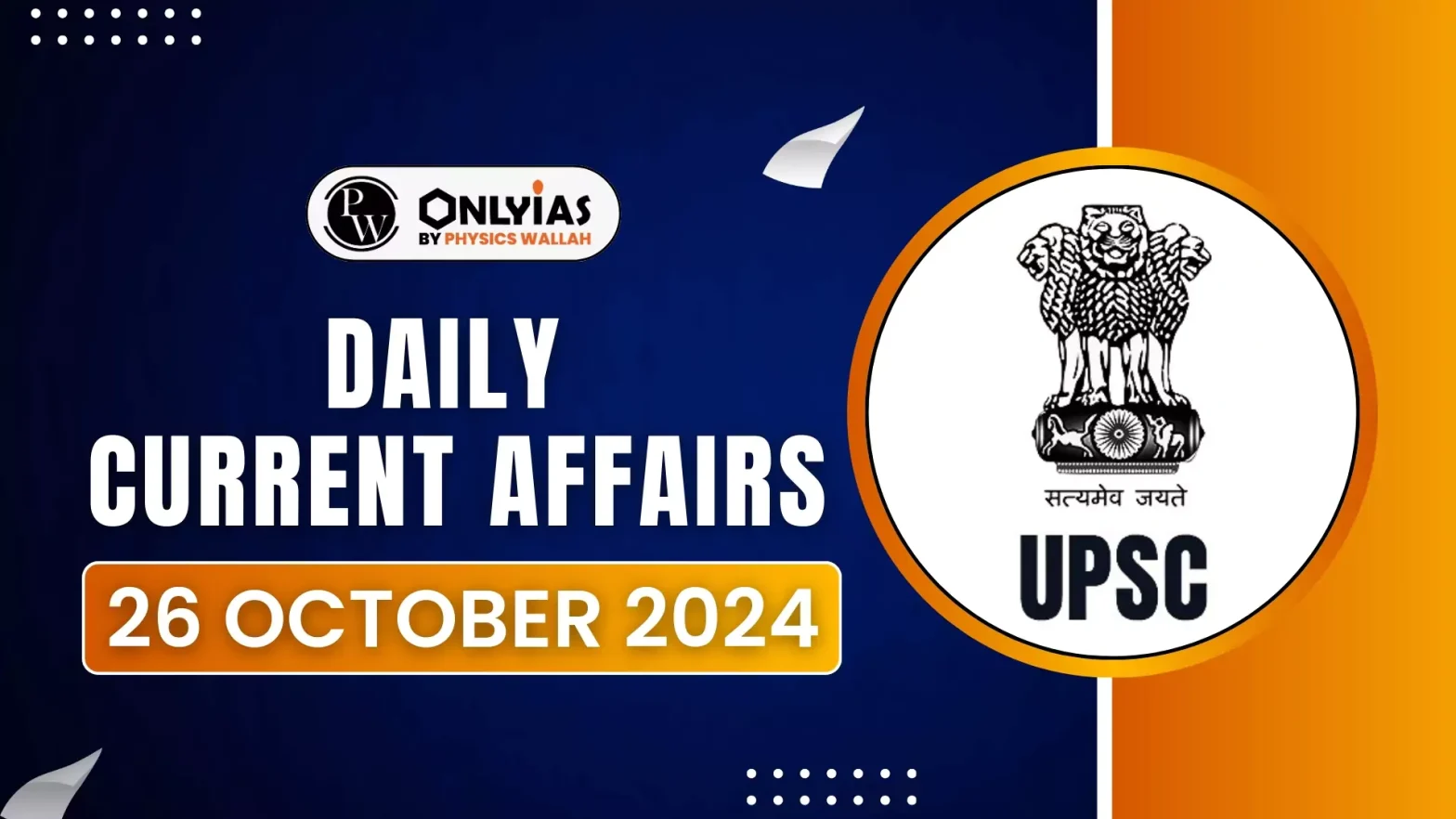The United Nations Environment Programme (UNEP) has released its annual Emissions Gap Report 2024, titled “No More Hot Air… Please!”
Key Insights From UNEP’s Emissions Gap Report 2024
-
India’s Emissions and Challenges
- India’s Emissions: In 2023, India’s greenhouse gas (GHG) emissions were about 2.3 billion tonnes, making up 8% of the world’s total.
- Low Per Capita Emissions: India’s emissions per person are only 2.9 tons, which is much lower than the global average of 6.6 tons.
- Comparing with Other Countries: India’s historical emissions are around 3%, whereas countries like the U.S. contribute up to 20%.
Enroll now for UPSC Online Course

-
Global Emissions Inequality
- High Emissions from G20 Countries: G20 countries (not including the African Union) produce 77% of global emissions.
- Least Developed Countries’ Emissions: The least developed countries emit only 3% of total emissions, yet face major climate impacts.
-
Record-High Global Emissions
- Emissions Rise: Global emissions reached a new peak in 2023 with a 1.3% increase.
- Paris Agreement Goals: Achieving the 1.5°C target requires a 42% emission reduction by 2030, while a 28% reduction is necessary for the 2°C target.
- Worst-Case Scenario: Without substantial cuts, warming could reach 2.6°C by 2100, risking ecosystem collapse and social upheaval
-
Major Sources of Emissions
- Power and Transport Sectors: In 2023, the power sector emitted 15.1 billion tonnes of CO₂, while transport emitted 8.4 billion tonnes.
- Aviation Emissions Surge: Emissions from international flights rose by 19.5% since the pandemic.
-
Climate Goals and Paris Agreement Issues
- Updated National Targets: Nearly 90% of countries have updated their climate targets, but these are still not enough to reach 2030 goals.
- Projected Emissions Increase: Global emissions could reach 57 billion tonnes by 2030 if current policies remain, exceeding safe climate targets.
-
Opportunities for Reducing Emissions
- Renewable Energy Growth: Solar and wind energy could help reduce emissions by 27% by 2030 and 38% by 2035.
- Forests’ Role in Emissions Reduction: Reforestation could reduce emissions by 20% in both 2030 and 2035 through carbon absorption.
Check Out UPSC NCERT Textbooks From PW Store
-
Need for More Climate Funding
- Increased Investment: Climate mitigation funding needs to increase six times to help developing countries adopt clean energy.
- Financial Help for Vulnerable Areas: Extra financial aid is necessary for countries most affected by climate change to help them adapt and mitigate impacts.
-
India’s Role in Global Climate Action
- Balancing Growth and Emissions: India’s emissions have risen to support its development, but they remain low per person and in historical comparison.
- Risk from Climate Change: India’s large agricultural population makes it vulnerable to climate risks like unpredictable monsoons.
- Renewable Energy Efforts: India’s solar and wind programs align with UNEP’s goals for cleaner energy.
Way Forward
- Policy and Financial Coordination: Global leaders need to act faster on reducing emissions, make stronger policies, and invest more in climate solutions.
- Expectations for COP30: Ahead of COP30, UNEP highlights the need to connect development and sustainability goals to close the emissions gap and meet climate goals.
India’s Initiatives to Reduce Emissions
India has taken significant strides towards reducing emissions and promoting sustainable development. Here are some key initiatives:
- National Action Plan on Climate Change (NAPCC)
- Aims to promote sustainable development and address climate change.
- Focuses on eight missions, including solar energy, energy efficiency, sustainable habitats, water conservation, and green India.
- Panchamrit Action Plan
- Sets ambitious targets to achieve net-zero emissions by 2070.
- Key goals include:
- Increasing non-fossil fuel capacity to 500 GW by 2030.
- Meeting 50% of energy requirements from renewable sources by 2030.
- Reducing total projected carbon emissions by one billion tonnes by 2030.
- Reducing carbon intensity of the economy by 45% by 2030.
Enroll now for UPSC Online Classes
- National Solar Mission
- Promotes solar energy development and adoption.
- Aims to establish India as a global leader in solar energy.
- Green Energy Corridor Project
- Facilitates the integration of renewable energy into the national grid.
- Develops transmission infrastructure to support renewable energy projects.
- National Green Hydrogen Mission
- Aims to make India a global hub for green hydrogen production and usage.
- Promotes green hydrogen technologies and creates a robust supply chain.
- Pradhan Mantri Ujjwala Yojana (PMUY)
- Provides clean cooking fuel (LPG) to rural households.
- Reduces indoor air pollution and improves health.
- Faster Adoption and Manufacturing of Hybrid and Electric Vehicles (FAME) Scheme
- Promotes the adoption of electric and hybrid vehicles.
- Provides subsidies, develops charging infrastructure, and supports EV research and development.
- National Mission for Enhanced Energy Efficiency (NMEEE)
- Improves energy efficiency across various sectors.
- Reduces energy consumption and emissions through energy-efficient measures in industries, buildings, and appliances.
![]() 26 Oct 2024
26 Oct 2024


